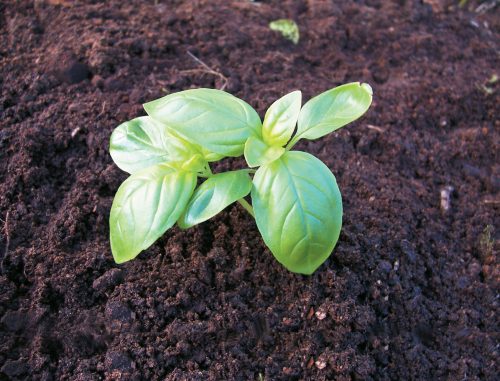
Tips for growing your own crop of this essential summer herb.
I always think of basil as a Mediterranean herb. But it actually originated in India, where it was regarded as sacred and can still be found growing around temples today. There are many great pieces of folklore about basil; e.g. to grow good basil one needs to shout and curse when sowing the seeds! It has also been associated with love; it is said that in times gone by, when an Italian woman placed a pot of basil on her balcony, she was ready to receive her suitor.
There are dozens of different varieties of basil to choose from, including exotic flavours like licorice, cinnamon, lime and anise. It also comes in a variety of colours from emerald green through to dark purple. I have to admit that although I often try some of the more unusual ones, my favourite is still the more common Genovese variety, which has large shiny green leaves, is prolific, and makes great pesto.
How to grow
Basil is one of the easiest culinary herbs to grow. It needs heat and sun, although it can also tolerate dappled shade. It can't tolerate cold; so if you want to have fresh basil over winter, grow it in a sunny spot indoors in a pot. Basil grows well in containers, just be careful not to let the soil dry out. Make sure the pot has a hole in the bottom for proper drainage to avoid waterlogging.
Basil seedlings are usually available in garden centres from spring through to late summer, but as they are tender plants and can be damaged by transplanting, try growing it from seed. Sow directly into your garden bed or pot when the last danger of frost has passed and the soil is warming up. Cover with approx 1cm of soil. Basil likes well-drained soil with a pH of between 6 and 7.5. Avoid too much fertiliser – your basil will have a better flavour.
Seeds will germinate within approximately seven days. Keep well watered. Thin seedlings if necessary once they have 2–3 pairs of leaves, by transplanting to approx 20cm spacings.
Harvesting
You can start harvesting the growing tips at any time. The more you pick, the more the plant will grow. To prolong the life of your plant and to preserve the full flavour, pluck out the flower heads when they form to prevent the plant becoming woody.
Basil nutritional benefits
Basil contains small amounts of a range essential vitamins and minerals as well as other phytonutrients – plant nutrients that are important to good health.
HFG TIP: When cooking with basil, add the leaves towards the end of the cooking time to retain maximum flavour and colour
www.healthyfood.com










